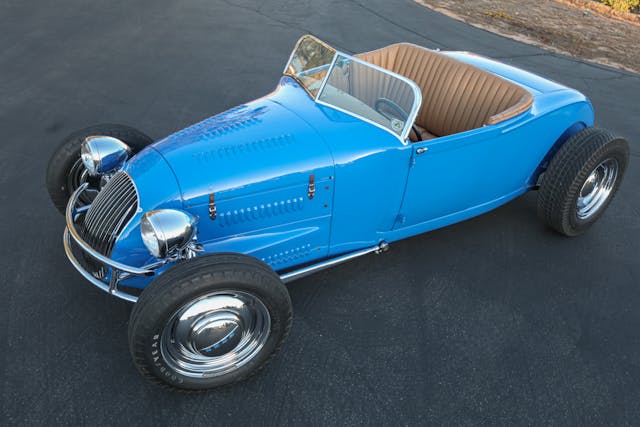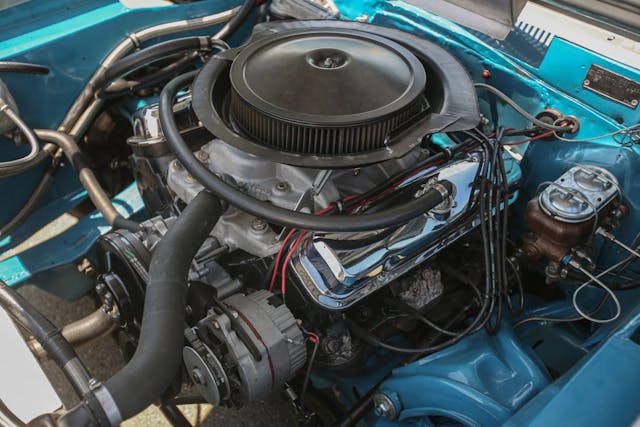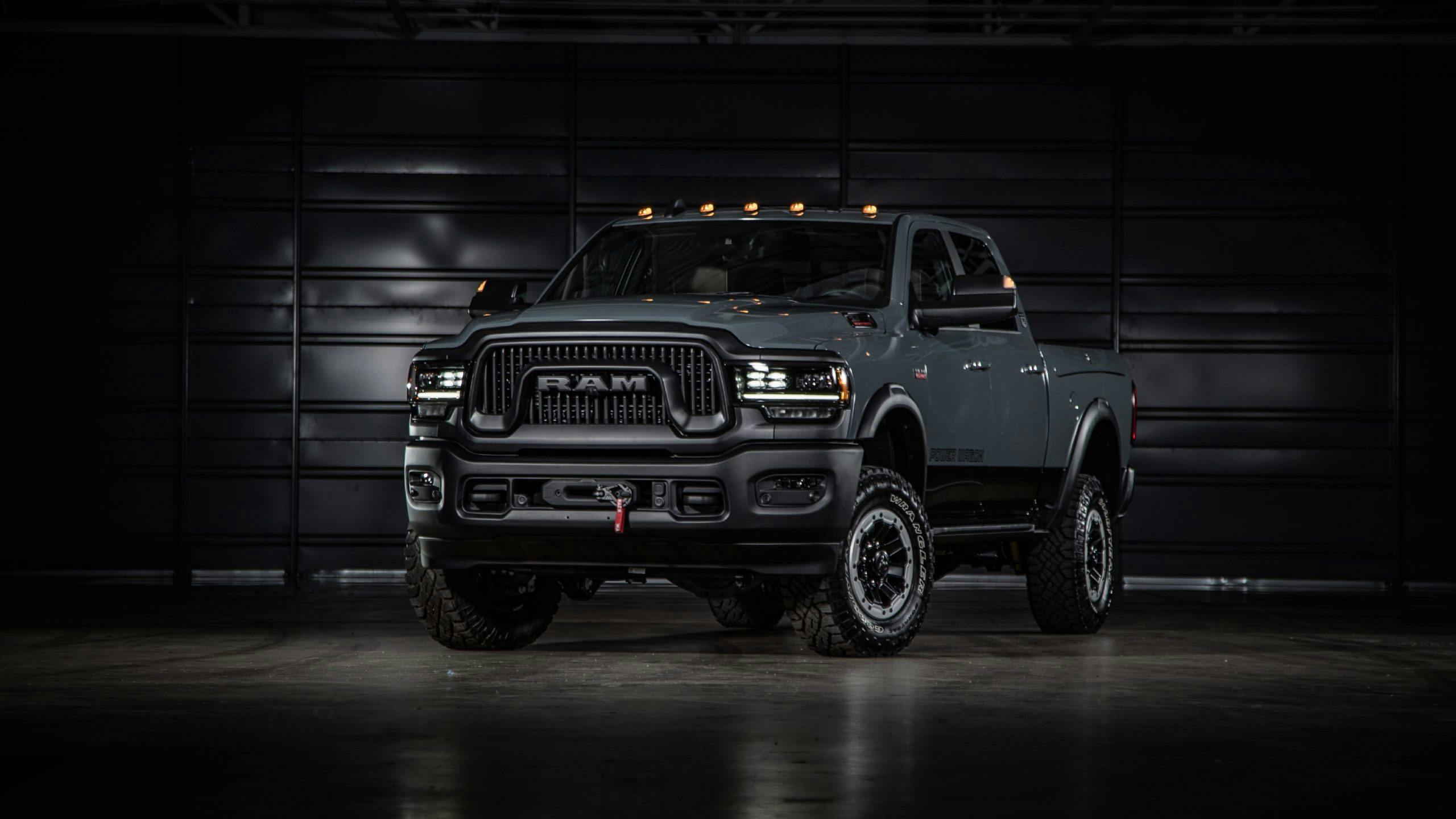4 car terms misused by almost everyone
Automotive enthusiasm has its own glossary. Many of the terms mean something different from one niche of the culture to another, but some have well-established definitions. Below are four of my biggest pet peeves in car nomenclature.
Some argue that because language is always changing, every word acquires a new meaning over time. That’s true, but only if we let them—and why fix what isn’t broken?

1. “Roadster”
The slow evolution of the term roadster is one that I’ll have to accept, but there’s a bar for entry—a point at which a car is simply not a roadster.
A century ago, “roadster” meant a two-seat, topless car with minimal weather protection. A Ford Model A roadster doesn’t have glass side windows, while a Model A cabriolet does. By the 1950s, the word’s meaning had been nudged a little—European sports cars with fabric side curtains and tops were still called roadsters, because their weather gear didn’t do much.
Later, the term evolved into a way to differentiate between sporty, two-seat convertibles and larger, more luxurious four-seat convertibles. That makes for a blurry line, of course. The Porsche 718 Boxster is a roadster, a 5000-pound, four-seat Bentley Continental GTC is not, and there’s plenty of room between the two for debate.
The upcoming Tesla Roadster, with its four seats and its fixed rear roof, is not a roadster by any definition, past or present. What’s so bad about admitting that a car is a targa-top?

2. “Big-block” Pontiac
Spend enough time searching classified ads, you’ll inevitably come across a car powered by a “Pontiac big-block.” There is no Pontiac big-block.
Pontiac unveiled its first V-8 in 1955. For nearly 30 years, until the division replaced its house V-8 with a version of GM’s “corporate” Chevy small-block, there was only one Pontiac V-8 architecture. From 265 cubic inches all the way to 455, Pontiac used just one bore spacing (the distance from the center of one cylinder bore to the center of the adjacent bore in the same bank). The 5.0-liter used in early Trans-Am racing (above) has the same external dimensions as a 455.
(Before anyone mentions it, Big Chief cylinder heads bolted onto a Chevy big-block bottom end don’t make the engine a Pontiac big-block.)
Oldsmobile is the same way, with identical bore spacing in everything from the 303 Rocket to the monster 455. Olds fans like to differentiate between small- and big-block engines based on deck height—the distance from crankshaft center to cylinder top—but that’s not what makes a big-block in my book. Tall-deck Chevy LSX engines are still small-blocks, after all.
With Olds and Pontiac, it seems the confusion comes from the fans themselves—each brand is now dead, and neither used the “small-block” or “big-block” nomenclature in any official capacity.

3. “Heat Soak”
When the C7 Corvette Z06 debuted for 2015, road-racing netizens were quick to assault its supercharged, 650-hp LT4 V-8. They were certain that a naturally aspirated V-8 was the proper choice for a track-focused Corvette.
They had a point, at least for a bit. The initial version of the cooling system in that Z06 wasn’t up to the task of keeping intake air cool for prolonged track sessions at high ambient temperatures. The result was reduced performance. For 2017, Chevrolet remedied the problem with a new cooling system and a supercharger lid with an improved charge cooler. (The latter part also found its way onto later applications of that engine, including the sixth-gen Camaro ZL1.)
Plenty of outlets said those early Z06s were experiencing “heat soak.” They weren’t. The engines in those cars simply produced more heat than the cooling system could deal with. “Heat soak” is what happens when an engine’s cooling system rises in temperature after you shut it off. When the water pump is no longer pumping coolant through the radiator, because that pump only runs when the engine is running.
Park a hot car, fresh off the track, and turn off the engine—coolant temps will continue to climb. If an engine is still running and still pushing coolant through its radiator, but it can’t keep everything happy enough to produce the quoted factory power? We already have a term for that: overheating.

4. “Widebody”
I’ve saved my most pedantic pet peeve for last. Fender flares don’t make a car a widebody.
Blame Dodge for legitimizing this. The picture above is a “widebody” Challenger. The car is also offered in a standard “narrow” configuration, without the fender flares.
If the fenders and quarter panels on the “narrow” and “widebody” versions of a car are the same, something doesn’t add up. Let’s use a Mopar cousin as an example: You could call the Ram TRX (below, left) a widebody, sure. The body is substantially different from that of the base Ram. But the Power Wagon? I don’t think so.
Many of you probably disagree with these silly opinions. I’d love to hear your own car-language pet peeves—share them in the comments! (Just don’t expect to change my mind.)
***
Check out the Hagerty Media homepage so you don’t miss a single story, or better yet, bookmark it. To get our best stories delivered right to your inbox, subscribe to our newsletters.





“The Porsche Cayman is a roadster“
Last I looked the Cayman is not a roadster, cabriolet or convertible. You can’t even get a sunroof on the thing from the factory. Ironic that you’d write the article about incorrect terms and make this mistake.
My pet is EEEveryone calling an engine the cars motor. dumbasses internal combustion engine!!!!!!!!!!
You are very correct. A “MOTOR” is electric. An ENGINE is gas powered.
I wear this big “S” on my chest and this cape because I am Semantic Man. Some rise to their aspirations; this destiny was thrust upon me. In this column, and among these comments, I am at home with kindred spirits.
I once had a t-shirt that stated, “In My Head, I’m Silently Correcting Your English.”
A Cayman has a fixed roof, 2 doors and a hatch back and is not a roadster or a convertible. A Boxster is a 2 door convertible with a folding top. That would be a roadster.
My Pet Peeve is the term “Muscle Car” Camaros, Firebirds, Mustangs, Cudas are NOT Muscle Cars, they are different class altogether, these are “Pony Cars”. Muscle Cars are usually Mid-size cars with Big engines, The mid-late 60’s. Olds 442, Buick Skylark GS. Pontiac GTO, Chevy Chevelle etc are prime examples, but some Mid-Large Size cars such as the Riviera (Luxury Muscle), Dodge Charger, Impala SS, etc are also considered Muscle Cars.
(Just don’t expect to change my mind.) THATS what I’m talkin’ about!!!
The 326 in my 1st car, a ‘63 Tempest LeMans convertible, was just HUGE compared to the 327 in my friend’s ‘67 Camaro RS.
I had one, as well. Learned recently that it was actually 337 cu. in.
It’s pretty simple, really. If it leaks a lot, it is a roadster.
Sorry, but this article is useless and very, very dated.
By this logic, then you forgot wagons, the first wagons were drawn by humans and beasts of burden so we cannot use wagons either. Also the first wheels were wood so steel and aluminum are out. Covered wagons had brakes so brakes are out. Buckets have been around forever so bucket seats are out. Button, no way, buttons were first on clothing. Not to mention levers, pulleys, the list goes on and on and on.
My pet peeve is the misuse of the term “muscle car.”To my thinking the muscle car era was from the mid 60’s to early 70’s. Chevelles, GTO’s, Olds 442, Cuda’s, Road Runners, Chargers, Challengers, GTX’s, Torinos, Marauders, Cyclones, and the like were indeputably muscle cars when equiped for high performance. I’m somewhat annoyed when people refer to Mustangs, Camaros, Firebirds, and Corvettes, as muscle cars. The Corvette is clearly a sports car, and the oters are pony cars. Even though Cuda’s and challengers were designed to compete with pony cars, they are closer in size to a Chevelle, so I think of them as muscle cars. I have no quarrel with anyone who diagrees. It’s just my humble opinion. By the way, even though I own a 66 big block 396 El Camino, and would like to think of it as a muscle car, I think the jury is out on whether or not it’s a car at all. GM says its a Chevelle variant, but the state governments require it to be registered as a truck. Who knows?
“ radio delete” is often used incorrectly. Most domestic and import cars required a buyer to pay optional for a radio. The 1963 Corvette required selecting the signal seeking AM radio or the AM/FM radio. Most buyers paid the optional charge of $137 or $174. All 1956 Ford models including the Tbird required, selecting the $124 radio. The 1974 Cadillac had four radio options.
Many of the import cars were shipped without radios so that the dealer could install an American brand radio.
When Toyota and Honda began importing their economy cars equipped with air conditioning, power windows, and radio it forced domestic manufacturers to start including radios.
You cannot delete something which was not there in the first place.
SPEAKING OF THE CHEVY SMALL BLOCK: Why not give this engine its credit to Kaiser, since it was their idea and design. Kaiser had an agreement with GM to buy and use their HydraMatic transmissions. Then Olds began building V-8s, but refused to share their engines with Kaiser. So, Kaiser immediately went to work on developing their own V-8. In 1952, Kaiser sales were decreasing to a point of no return. But before their total demise in U.S. production in 1955, Chevrolet bought the rights to build and use this engine in time for the 1955 model year. I, personally, learned this information from several publications, as well as directly from a couple individuals that were employed with Chevrolet at levels high enough to obtain first hand knowledge of the purchase.
First, a “standard” transmission. People refer to the manual transmission as a standard transmission. The term “standard” means the base or standard offering. 60+ years ago the base transmission was a manual transmission…that was the standard offering. Nowadays by far the most common transmission is the automatic…really the “standard” transmission today should be the automatic.
I have a couple of 50+ year old vehicles. One is a 1972 Ford F250 4×4. Model is actually a F260. The new favorite internet term is as these Ford trucks have a divorced transfer case and sit high from the factory…they are called “Highboy’s”. This is not a term ever used by Ford for these trucks. They are F250 4×4’s.
Other favorites:
Every rebuilt engine is “Balanced and Blueprinted”. Sure…..if you say so….
Also, being a Ford guy. “Numbers matching” when referring to Ford (and Chrysler I think) products. Ford never matched engine and transmission serial numbers the car VIN…..that was a GM thing.
Yep. I always hear folks referring to their ’78 plus Ford trucks as “highboys.” The term was unofficially used for earlier trucks that had the very narrow frame, but not the lowered F-250s that came after. I have a very sweet ’79 F-150 SB 4×4 (2 inch lift) that I take to shows and it’s amazing the number of people who refer to it as a “highboy.”
Similar to standard transmission is conventional cab, a two door pickup with an 8 ft. bed. Today, that configuration is far from conventional.
Pontiac “Big Block”
Referring to the Pontiac and Oldsmobile V8s as big blocks is perfectly OK. They are, afterall, big block engines. Just because there were no small block Pontiac or Oldsmobile V8s in no way makes these engine anything less than big blocks. They are, afterall, about the same size external dimensions as the Chevy big block.